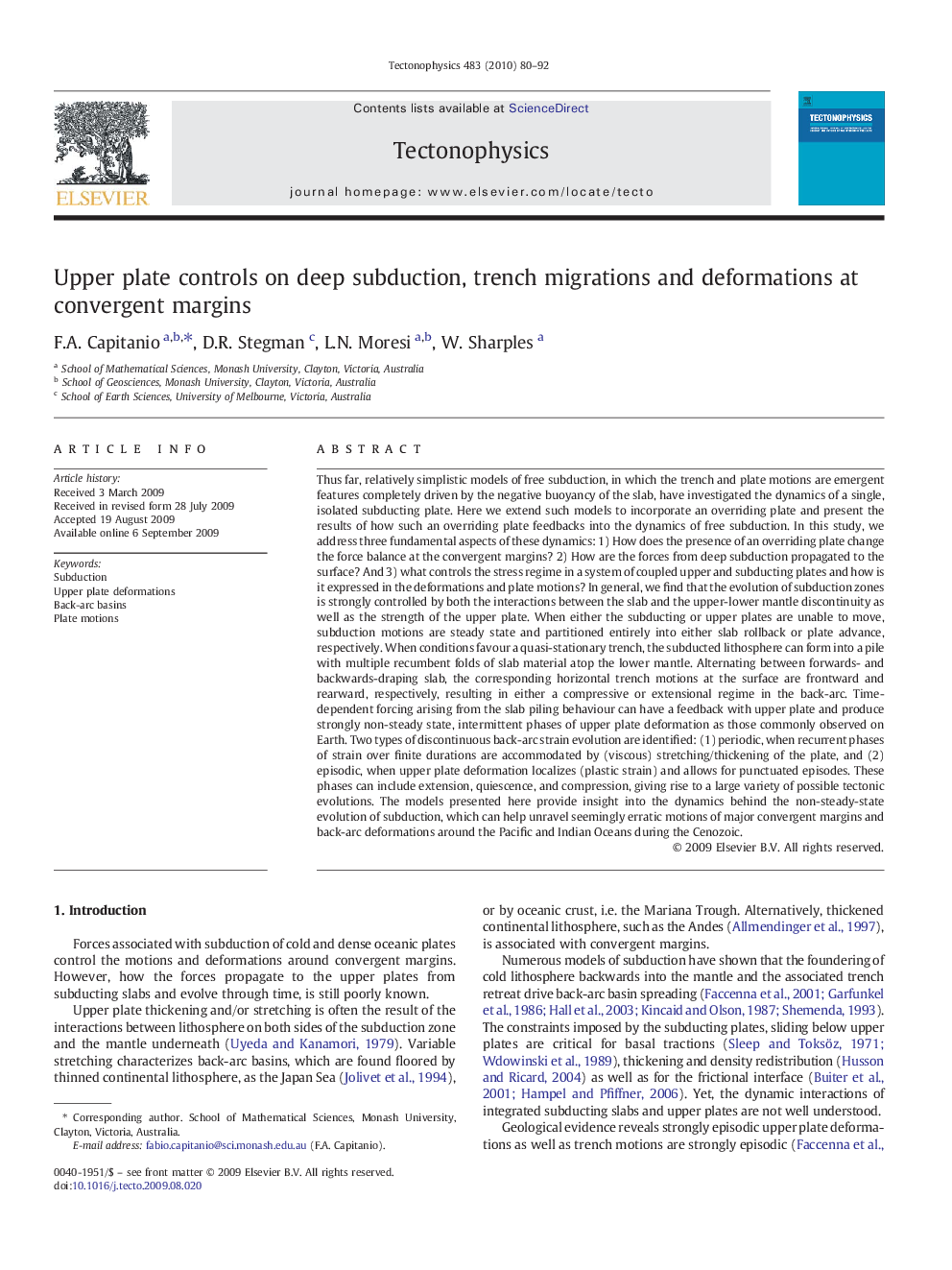| کد مقاله | کد نشریه | سال انتشار | مقاله انگلیسی | نسخه تمام متن |
|---|---|---|---|---|
| 4693701 | 1636873 | 2010 | 13 صفحه PDF | دانلود رایگان |

Thus far, relatively simplistic models of free subduction, in which the trench and plate motions are emergent features completely driven by the negative buoyancy of the slab, have investigated the dynamics of a single, isolated subducting plate. Here we extend such models to incorporate an overriding plate and present the results of how such an overriding plate feedbacks into the dynamics of free subduction. In this study, we address three fundamental aspects of these dynamics: 1) How does the presence of an overriding plate change the force balance at the convergent margins? 2) How are the forces from deep subduction propagated to the surface? And 3) what controls the stress regime in a system of coupled upper and subducting plates and how is it expressed in the deformations and plate motions? In general, we find that the evolution of subduction zones is strongly controlled by both the interactions between the slab and the upper-lower mantle discontinuity as well as the strength of the upper plate. When either the subducting or upper plates are unable to move, subduction motions are steady state and partitioned entirely into either slab rollback or plate advance, respectively. When conditions favour a quasi-stationary trench, the subducted lithosphere can form into a pile with multiple recumbent folds of slab material atop the lower mantle. Alternating between forwards- and backwards-draping slab, the corresponding horizontal trench motions at the surface are frontward and rearward, respectively, resulting in either a compressive or extensional regime in the back-arc. Time-dependent forcing arising from the slab piling behaviour can have a feedback with upper plate and produce strongly non-steady state, intermittent phases of upper plate deformation as those commonly observed on Earth. Two types of discontinuous back-arc strain evolution are identified: (1) periodic, when recurrent phases of strain over finite durations are accommodated by (viscous) stretching/thickening of the plate, and (2) episodic, when upper plate deformation localizes (plastic strain) and allows for punctuated episodes. These phases can include extension, quiescence, and compression, giving rise to a large variety of possible tectonic evolutions. The models presented here provide insight into the dynamics behind the non-steady-state evolution of subduction, which can help unravel seemingly erratic motions of major convergent margins and back-arc deformations around the Pacific and Indian Oceans during the Cenozoic.
Journal: Tectonophysics - Volume 483, Issues 1–2, 1 March 2010, Pages 80–92